Summary
An eye canthal tilt is the angle between the inner and outer corners of the eyes and plays a significant role in periorbital aesthetics. The tilt can be negative, neutral, or positive, with a positive tilt providing a more attractive, sharp, and youthful appearance. Studies, such as the one conducted at the University of Toronto, have found that a positive canthal tilt is a strong indicator of female facial attractiveness. This phenomenon is explained by the fact that a steeper palpebral fissure inclination is a neonatal and sexually dimorphic feature. A positive canthal tilt is also linked to youth, health, and exuberance. Various studies support the notion that a positive canthal tilt enhances a woman’s appearance, making her look more attractive, youthful, and feminized. However, as the tilt decreases with age due to soft tissue descent, it can contribute to a more masculinized appearance. Research has shown that female faces with a positive canthal tilt are preferred 93% of the time, making it a distinctive quality of a beautiful eye.
Research
The eye canthal tilt is the angle between the internal corner of the eyes (medial canthus) and the external corner of the eyes (lateral canthus). This tilt is a crucial section of periorbital aesthetics.
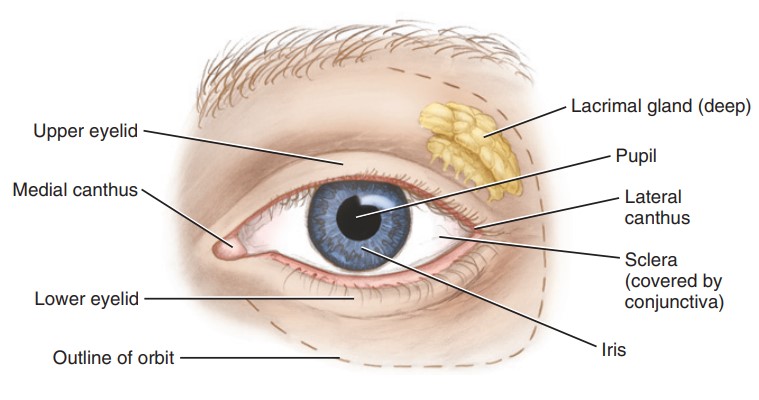
The eye canthal tilt can be negative, neutral, or positive. The canthus tilt is considered positive if the medial canthus angle ranges between 5 and 8 degrees below the lateral canthus. A negative canthal tilt is achieved when the medial canthus tilt varies between -5 to -8 degrees beneath the lateral canthus. A neutral tilt is when the medial canthus and lateral canthus are in line. A positive canthal tilt gives one a more attractive, sharper, and younger look.
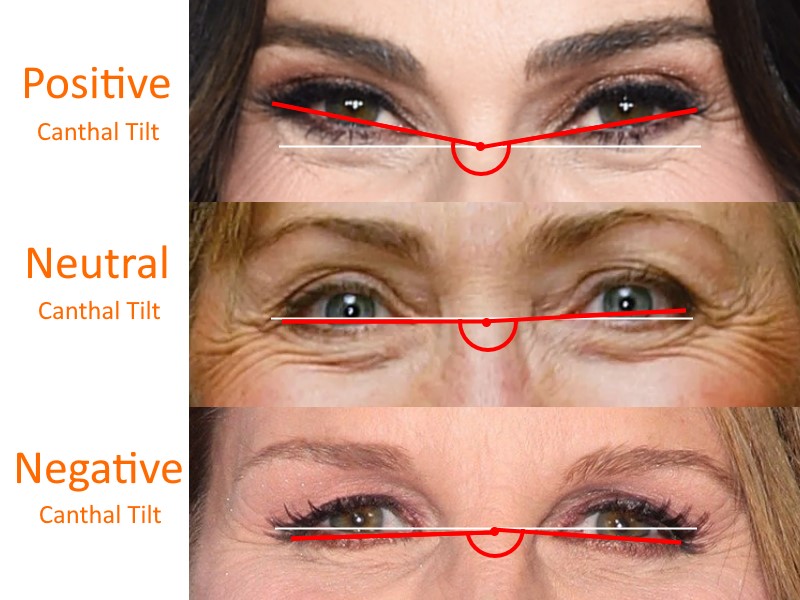
According to a study held at the University of Toronto by Bashour & Geist (2007), canthal tilt is a power cue for female facial attractiveness. The possible explanation to this phenomenon as per Bashour & Gest is “The fact that palpebral fissure inclination is steeper in children than adults makes it a neonatal feature, and the fact that it is again steeper in females than males after puberty also makes it a sexually dimorphic feature.”
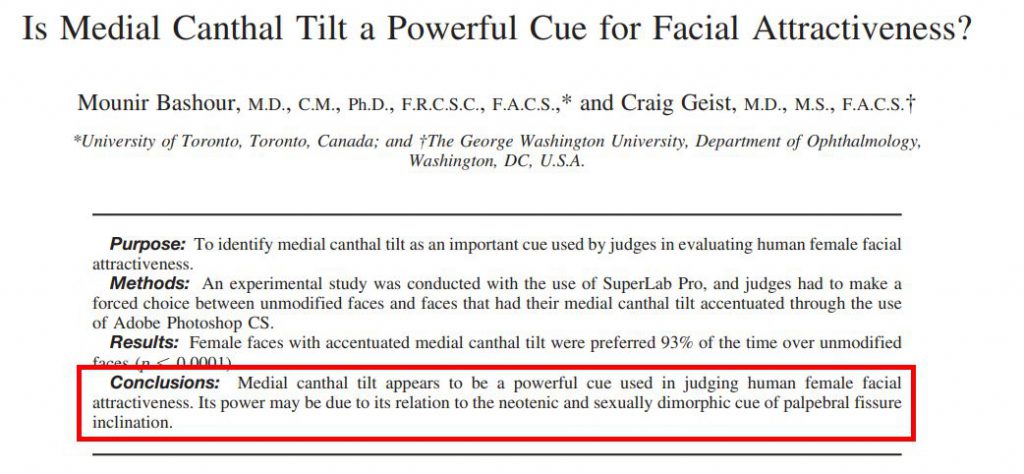
In their publication “The beautiful eye”, medical doctors Volpe & Ramirez from Johns Hopkins Hospital mentions “In women, the intercanthal axis averages +4.1 mm or +4 degrees. This upward tilt of the intercanthal axis is one of the most distinctive qualities of the beautiful eye. When one looks at any truly beautiful face, this upward tilt is found to be present.”
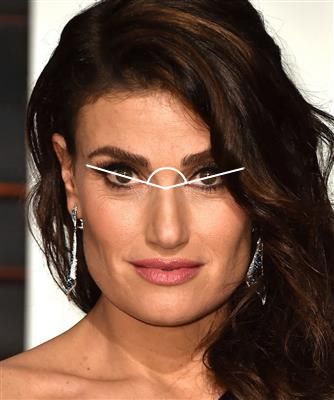
In the book “Cosmetic Patient Evaluation” by Tian Ran Zhu from Warren Alpert Medical School of Brown University, USA mentions that “The concept of the canthal tilt is critical as it serves as an important indicator of aging. A positive canthal tilt with lower eyelid lightly tilting upward along lateral canthus exudes youth, health, and exuberance. On the contrary, a depressed tilt projects old age, melancholy, and weariness.”
Their findings are widely corroborated by other studies, a positive canthal tilt can make women look “attractive and younger” (Askham et ali, 2019), and “feminized” (Facque et al, 2019). Further to that, the canthal tilt can add a gradually “masculinized appearance” if the tilt depresses with age as the soft tissue descends (Somenek, 2018).
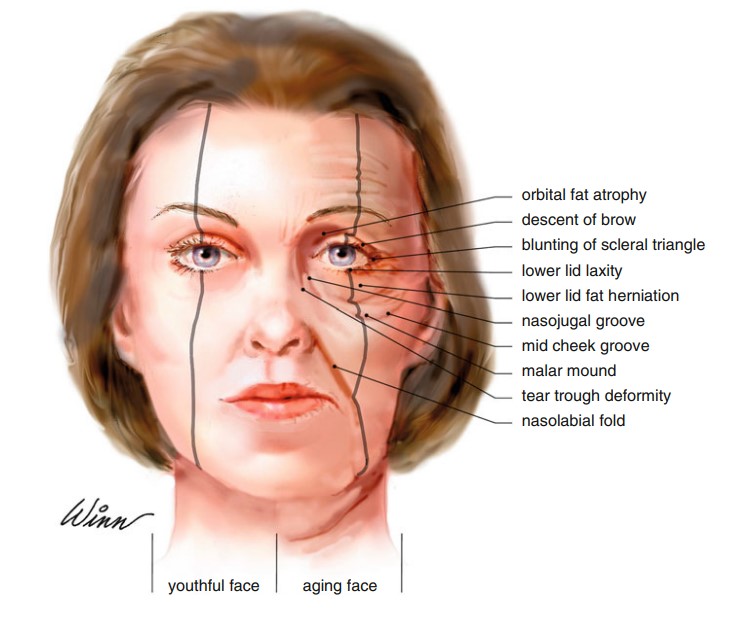
When measuring the canthal tilt, “A positive value designates an upward tilt of the lateral canthus and a negative value a downward tilt. This upward tilt of the intercanthal axis is one of the most distinctive qualities of the beautiful eye” (Volpe & Ramirez, 2005). Bashour & Geist (2007) test this directly in their comprehensive study, they find that a positive canthal tilt adds to the attractiveness of the female face and explain why they think this occurs. The results revealed that female faces with positive canthal tilt are preferred 93 percent of the time.
References
Bashour, M., & Geist, C. (2007). Is medial canthal tilt a powerful cue for facial attractiveness?. Ophthalmic Plastic & Reconstructive Surgery, 23 (1), 52-56. https://pubmed.ncbi.nlm.nih.gov/17237692/
Volpe, C. R., Ramirez, O. M., (2005). The Beautiful Eye. Facial Plastic, Surgery Clinics of North America. 13 (4), 493–504, https://pubmed.ncbi.nlm.nih.gov/16253836/
Tian Ran Zhu, Ali Banki, Mohammad Banki, Cosmetic Patient Evaluation (2018), In book: Complications in Maxillofacial Cosmetic Surgery https://link.springer.com/chapter/10.1007/978-3-319-58756-1_3
Akşam, E., Karatan, B. (2019). Periorbital Aesthetic Surgery: A Simple Algorithm for the Optimal Youthful Appearance. Plastic and reconstructive surgery. Global Open, 7 (5), e2217. https://pubmed.ncbi.nlm.nih.gov/31333949/
Facque, A. R., Atencio, D., Schechter, L. S., (2019). Anatomical Basis and Surgical Techniques Employed in Facial Feminization and Masculinization. The Journal of Craniofacial Surgery. (30) 5, 1406 – 1408. https://pubmed.ncbi.nlm.nih.gov/31299732/
Somenek, M., (2018). Gender-Related Facial Surgical Goals. Facial Plastic Surgery. 34 (05), 474-479. https://pubmed.ncbi.nlm.nih.gov/30296799/
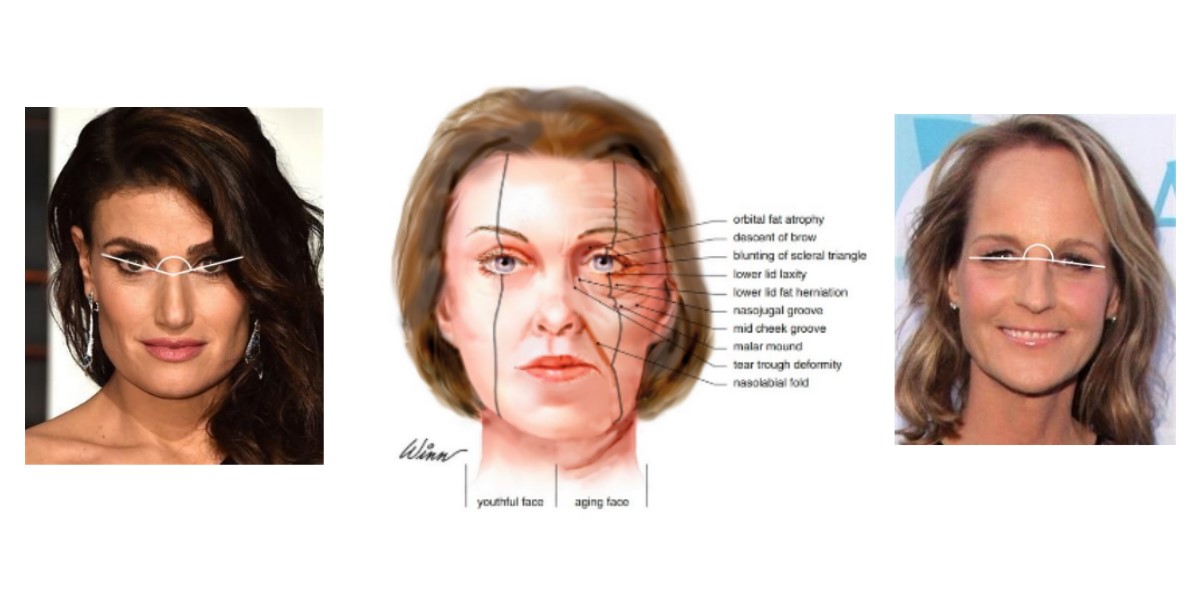

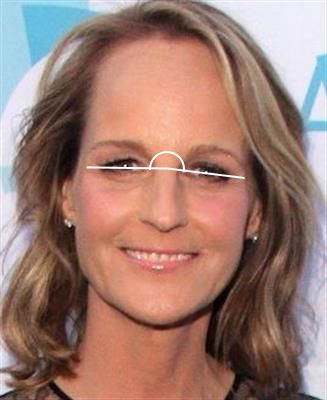
4 replies on “What is an Eye canthal Tilt? Why is a positive tilt more attractive than a negative tilt among females?”
Does the eye shape describe the person, or is the person described by the eye shape? This phenomenon will be a significant decider about how the owner of the eyes experiences life. Youthful, attractive people seem to have an easier time of it.
i have a preference for negative canthal tilts
u aRE WRONG. the best tilt is POSTIVE
Both preferences have their place in facial aesthetics. It’s a matter of personal or cultural preference. For example, a positive canthal tilt is often associated with a youthful, alert appearance, and is sometimes sought after in eyelid or canthoplasty surgery. On the other hand, a negative canthal tilt can be seen as giving a characterful or intense look, which some people might prefer for its uniqueness or how it accentuates their features.